Hi Byrtt,
This is really cool. Thank you for providing this to the community - I wonder if perhaps we should start a new thread for this over in Headphone Amps section? So the EQ magic takes a cheap headphone and makes it sound like a nicer cheap headphone? I wonder how much more magic there is when you do this to a DT-880 or HD-600? I have the DT-880 so would like to see that correction curve if you ever have time. I know that manually tweaking 35 PEQ's is not easy! So you deserve a huge thanks!
I wonder how much more magic there is when you do this to a DT-880 or HD-600? I have the DT-880 so would like to see that correction curve if you ever have time. I know that manually tweaking 35 PEQ's is not easy! So you deserve a huge thanks!
This is really cool. Thank you for providing this to the community - I wonder if perhaps we should start a new thread for this over in Headphone Amps section? So the EQ magic takes a cheap headphone and makes it sound like a nicer cheap headphone?
Hi xrk971,
Admit forgot to write sound was based on first impression they sound the same so lets see if that holds in long run and with more different ears on it, there is differences we know of if for example we zoom in on impedance curves it discover DT-880 is smoother than OB-1 so engineering for DT-880 probably focused there and took much more time and knowledge to get it improved in smaller acoustic resonances not taking place into final design, also nominal impedance will make a difference for PCA performance and level of boost at low end for HPS-5000 verse OB-1 is a lot more. HD-650 is then again smother in impedance than DT-880 so we probably in long run and for long time listening get some small improvements, but what do i know about this other that these EQ correction works fantastic for OB-1 plus HPS-5000 : ) will create a DT-880 correction so we get more ears and opinion if I'm right for sound in long run.
Admit forgot to write sound was based on first impression they sound the same so lets see if that holds in long run and with more different ears on it, there is differences we know of if for example we zoom in on impedance curves it discover DT-880 is smoother than OB-1 so engineering for DT-880 probably focused there and took much more time and knowledge to get it improved in smaller acoustic resonances not taking place into final design, also nominal impedance will make a difference for PCA performance and level of boost at low end for HPS-5000 verse OB-1 is a lot more. HD-650 is then again smother in impedance than DT-880 so we probably in long run and for long time listening get some small improvements, but what do i know about this other that these EQ correction works fantastic for OB-1 plus HPS-5000 : ) will create a DT-880 correction so we get more ears and opinion if I'm right for sound in long run.
Last edited:
Traced also average response of dirty cheap Behringer HPS-5000 and created correction to hit Harman curve and must say in corrected stage OB-1 verse HPS-5000 now start sound very much exactly the same, for long listening sessions HPS-5000 wins because they don't clamp so hard against head and also weight much less but in they cheap don't have any nice look or feel of nice build quality.
HPS-5000 correction below, black is Harman target response curve, green is traced average of HPS-5000 raw curves measured over innerfidelity website, blue is correction curve which takes 35x EQ filters or one convolution 32bit wav-file, and purple is green times blue showing fair close coherence to black target.
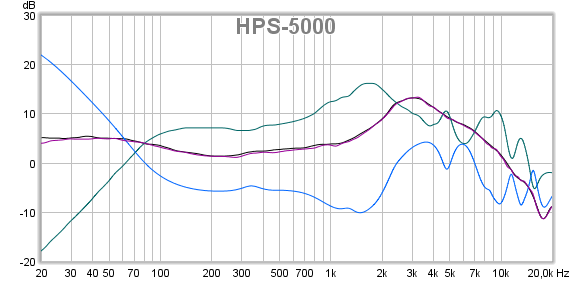
OB-1 correction below, black is Harman target response curve, brown is traced average of OB-1 raw curves measured over innerfidelity website, orange is correction curve which takes 25x EQ filters or one convolution 32bit wav-file, and green is brown times orange showing fair close coherence to black target.
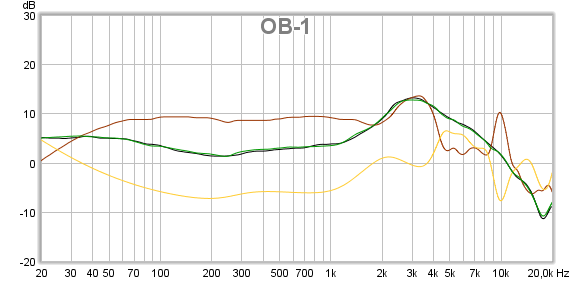
Can share numbers for these HPS-5000 filters too so if any is interested give a note.
Hi Brett,
could you explain how to create the correction curve for different headphones? I want to try correct my other headphones/earphones if possible
thanks!
I will take a guess here based on the graphing of REW. I think Byrtt digitizes the curves from Innerfidelity. Imports the curve for the headphone, then imports the Harman curve. They are loaded into REW where there is an EQ dialog. Then start tweaking PEQ's while watching the fit - manually adjust until the processed curve matches the target. Transfer those PEQ's into Jriver.
Byrtt beat me to it. Thanks for making the DT880 curve!
Making me a PCA is also a big thanks.
About guessing its close, difference is EQ correction is done in Rephase because it has nearly unlimited banks of PEQs and more flexiable settings than into REW, for example REW shelving filters have no way to adjust Q, also Rephase can output a convolution file into various formats depending what box is used or one can simply copy numbers from filters set into some player software.
Some can maybe do task in smarter way but its the software i learned to manage and they all free except i support some little donation from time to time because its great tools, more specific info tomorrow in a guide but until that here is headlines:
1. Capture grey curves from Innerfidelity pdf document with MS snipertool saved as png, then in MS paint draw a purple line in middle of those grey curves which should be the average response and save png file.
2. Trace that purple response curve in FPGraphTracer and save as frd file, also Harman curve is traced same way once for all and can be reused for every new set of head phones one like to correct in future.
3. In REW import those two curves and offsets head phones curve relative to Harman and zero dB point so as max of boost and cuts will be kind of symmetric in dB value hovering around zero dB line. Now at "ALL SPL" tab REW can do the math and create a difference curve between Harman curve and actual head phone curve picking math (A over B), and this new difference curve is exported as frd or txt file.
4. In Rephase above is imported and then inverted because smart thing is if this difference curve between Harman target curve or it could be another famous head phone curve say HD-650 with difference to own head phone curve is EQed visual flat in Rephase we have our filter correction numbers or can output a single convolution file. This is the step that takes most time puzzling with sweeping Q/dB/frq numbers up and down until visual curves resonances and deviation from flat start get good as possible looking, think this phase probably needs a bit of patience even one is good at it.
So the EQ magic takes a cheap headphone and makes it sound like a nicer cheap headphone?
EQ can do an awesome job of flattening the amplitude across the usable frequency range of a driver. However, remember that the cause of all those peaks in the frequency response are breakup modes and enclosure resonances. When we smash down the amplitude of the signal at these "ringing" frequencies, we make it so that the music PLUS the unwanted ringing is now equal in amplitude to the rest of the audio spectrum. Those frequencies will still have distortion as part of their makeup.
Is EQing still worthwhile? I think so. But I believe this is why you can't make any old pair of cans sing like a STAX.
----------------------
In other news, my new PCA is a BEAST!
I upgraded pretty much everything for this build, so it is hard to nail down what is responsible for what, but I have a feeling the 64mA bias current is a big part of the "zing" factor. The new caps make a big difference too. As I mentioned, the PPS input caps really open up the treble going into the transistors. Right now I am running my amp with 25V 1000uF Panasonic FR on the output. These are clearly more detailed and neutral than the Nichicon KA I used last go round. No bypass--none needed! This thing has treble for days...
The sound now is much faster and more "technical" than my first build. First one was warm and shined with jazz and acoustic music. This one is agile and transparent, and can handle anything without breaking a sweat.
I just threw one of the most difficult reference tracks I have in my collection at it..."Letting Go" by BT, JES, and Fractal. It has everything from female vocals to bass drops to glitchy stop-and-go synth stabs to lightning speed 128th-note drum machine farts, lol.
Listening to this mess with a pair of ATH-M50 cans, my impressions are:
1) Best bass I've ever heard out of a headphone
2) Detail is insanely good
3) Control! This thing may run hot to the touch, but the presentation is cool as a cucumber. It maintains its composure through even the most complex passages. Crystal clear, powerful, and engaging sound.
Sure babysupra, plan is tomorrow make DT-880 correction for xrk971 and thereafter will make guide in MS Publisher how response correction is created using free tools FPGraphTracer/REW/Rephase and try get guide converted and shared as pdf document.
That would be super awesome!
It's going to be nice to have my Monoprice 8323 and Koss KSC75 sounding like HD650 huehuehue
Which makes me wonder if the bass roll off in KSC75 is hardware limitation or due to tuning, because i like me some bass hahaha
StellarE,
Sounds like you have yourself a killer rig. I have to try these Panasonic FR's and PPS caps.
Doesn't get much better than that.
Thanks for the feedback.
A lot also depends on how much headroom is left after the EQ has been applied. Generally, I don't EQ dips, except broad and shallow valleys. EQ'ing dips brings out distortion peaks at where you fill the dip. Generally I only chop peaks and smooth broad humps. In the end, the closer the headphone is already to the ideal, the better it will be. Like my grandmother said, "you can't make chicken pie out of chicken sh_t."
Sounds like you have yourself a killer rig. I have to try these Panasonic FR's and PPS caps.
Listening to this mess with a pair of ATH-M50 cans, my impressions are:
1) Best bass I've ever heard out of a headphone
2) Detail is insanely good
3) Control! This thing may run hot to the touch, but the presentation is cool as a cucumber. It maintains its composure through even the most complex passages. Crystal clear, powerful, and engaging sound.
Doesn't get much better than that.
Thanks for the feedback.
EQ can do an awesome job of flattening the amplitude across the usable frequency range of a driver. However, remember that the cause of all those peaks in the frequency response are breakup modes and enclosure resonances. When we smash down the amplitude of the signal at these "ringing" frequencies, we make it so that the music PLUS the unwanted ringing is now equal in amplitude to the rest of the audio spectrum. Those frequencies will still have distortion as part of their makeup.
A lot also depends on how much headroom is left after the EQ has been applied. Generally, I don't EQ dips, except broad and shallow valleys. EQ'ing dips brings out distortion peaks at where you fill the dip. Generally I only chop peaks and smooth broad humps. In the end, the closer the headphone is already to the ideal, the better it will be. Like my grandmother said, "you can't make chicken pie out of chicken sh_t."
Last edited:
EQ can do an awesome job of flattening the amplitude across the usable frequency range of a driver. However, remember that the cause of all those peaks in the frequency response are breakup modes and enclosure resonances. When we smash down the amplitude of the signal at these "ringing" frequencies, we make it so that the music PLUS the unwanted ringing is now equal in amplitude to the rest of the audio spectrum. Those frequencies will still have distortion as part of their makeup.
Is EQing still worthwhile? I think so. But I believe this is why you can't make any old pair of cans sing like a STAX......
Not shure agree about "unwanted ringing is now equal in amplitude" in minimum phase resonances should stop the ringing if they precisely repaired the reverse filter and should resonances happen be non minimum phase it nowadays can be repaired with reverse FIR filter if a small delay I/O from DSP engine to repair in time domain is accepted. Guess in the end question must be how close our own cans response really are to those measurements so that correction is a precise enough reverse filter.
.....In other news, my new PCA is a BEAST!.....
Agree this one better : )
That would be super awesome!
It's going to be nice to have my Monoprice 8323 and Koss KSC75 sounding like HD650 huehuehue
Which makes me wonder if the bass roll off in KSC75 is hardware limitation or due to tuning, because i like me some bass hahaha
Had a visual look at KSC75 and in it looks small and a clip on device so you probably right bass roll off is hardware limitation in having less cone area than bigger cans, experiment with boost down there to find out if head room is okay in long run, a round small diameter baffle is worst case for diffraction and comb filtering, at about 3,8kHz it looks comb has nasty null/dip/teeth and suggest don't correct that one because its probably non repairable null with common acoustic distances to same point and also clear viewable looking at impedance curve.
Monoprice 8323 peaks and dips looks bit broader and less in range so they probably not a real null and therefor should be repairable.
.....A lot also depends on how much headroom is left after the EQ has been applied. Generally, I don't EQ dips, except broad and shallow valleys. EQ'ing dips brings out distortion peaks at where you fill the dip. Generally I only chop peaks and smooth broad humps. In the end, the closer the headphone is already to the ideal, the better it will be. Like my grandmother said, "you can't make chicken pie out of chicken sh_t."
Agree about pie : ) but think there's more to correction magic if its precise enough reverse filter be it IRR or FIR, we seen how Barleywater and wesayso show excellent results and while for speakers in a room those nice data will be in a sweet spot in space and a limited area then into cans we always is sitting in this sweet spot in space, and Harman target response curve is developed so as to get headphones sound like good speakers in a good room.
BYRTT,
You probably know more about EQ than I do. I'm just speaking based on my own attempts doing corrective EQ, which had mixed results. I will say, your method seems very precise.
I ordered more caps from Digikey and Parts Connexion today. Nichicon FG, KW, FW, and KZ, plus Elna Silmic and Cerafine (hence the PC order). Basically got all the biggest values of each type that will fit in the 10mm wide space I have left on the board. Picked up more of those darn crimp sockets too!
You probably know more about EQ than I do. I'm just speaking based on my own attempts doing corrective EQ, which had mixed results. I will say, your method seems very precise.
I ordered more caps from Digikey and Parts Connexion today. Nichicon FG, KW, FW, and KZ, plus Elna Silmic and Cerafine (hence the PC order). Basically got all the biggest values of each type that will fit in the 10mm wide space I have left on the board. Picked up more of those darn crimp sockets too!
Monoprice-8323 / DT-880 / OB-1 / HPS5000 corrections to Harman curve, numbers for manual settings for various filters are in visuals below or alternative is use convolution engine in JRiver or Foobar and point to below attached zipped wav file. Sorry if using those wav files they are not optimized for IIR filters so a relative huge delay (memory buffering) will happen because in lack of time to study how optimize for this normal real time IIR filter scenario, wav file is in principle only for 44,1kHz tracks but some players try to convert and work for other sample rates too but don't expect optimal quality, and by the way signal is inverted using wav file so as PCA is corrected 180º.
babysupra,
Know you were after convert to HD-650 target and guide will follow later, in meantime you could try Harman curve and the lower bass reach you see in corrected Monoprice-8323 curves below.
xrk971,
Imagine DT-880 is great cans and probably personal preference but to see if EQ works good it would be nice first try test corrected OB-1 setup to see if it improve in your taste and if it does mayby start beat non corrected DT-880, thereafter test if DT-880 improve and if sound start be the same when both is corrected.
stellarelephant,
I can be wrong and these specific EQ settings don't work for other better ears than mine, it would be good with more ears on it.
babysupra,
Know you were after convert to HD-650 target and guide will follow later, in meantime you could try Harman curve and the lower bass reach you see in corrected Monoprice-8323 curves below.
xrk971,
Imagine DT-880 is great cans and probably personal preference but to see if EQ works good it would be nice first try test corrected OB-1 setup to see if it improve in your taste and if it does mayby start beat non corrected DT-880, thereafter test if DT-880 improve and if sound start be the same when both is corrected.
stellarelephant,
I can be wrong and these specific EQ settings don't work for other better ears than mine, it would be good with more ears on it.
Attachments
-
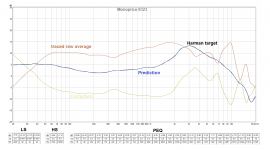 2000.png99 KB · Views: 231
2000.png99 KB · Views: 231 -
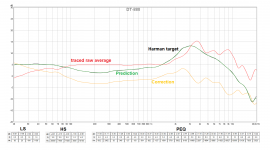 2001.png71.2 KB · Views: 229
2001.png71.2 KB · Views: 229 -
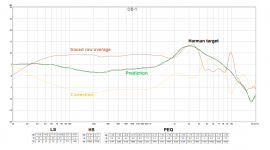 2002.png78.4 KB · Views: 236
2002.png78.4 KB · Views: 236 -
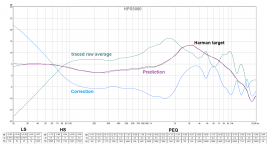 2003.png87.9 KB · Views: 218
2003.png87.9 KB · Views: 218 -
OB-1_to_HARMAN_correction_at_44kHz_plus_INV_for_PCA.zip49.2 KB · Views: 40
-
HPS-5000_to_HARMAN_corrrection_at_44kHz_plus_INV_for_PCA.zip34 KB · Views: 42
-
Monoprice-8323_to_HARMAN_corrrection_at_44kHz_plus_INV_for_PCA.zip35.2 KB · Views: 40
-
DT-880_to_HARMAN_corrrection_at_44kHz_plus_INV_for_PCA (1).zip40.1 KB · Views: 31
Last edited:
Monoprice-8323 / DT-880 / OB-1 / HPS5000 corrections to Harman curve, numbers for manual settings for various filters are in visuals below or alternative is use convolution engine in JRiver or Foobar and point to below attached zipped wav file. Sorry if using those wav files they are not optimized for IIR filters so a relative huge delay (memory buffering) will happen because in lack of time to study how optimize for this normal real time IIR filter scenario, wav file is in principle only for 44,1kHz tracks but some players try to convert and work for other sample rates too but don't expect optimal quality, and by the way signal is inverted using wav file so as PCA is corrected 180º.
babysupra,
Know you were after convert to HD-650 target and guide will follow later, in meantime you could try Harman curve and the lower bass reach you see in corrected Monoprice-8323 curves below.
xrk971,
Imagine DT-880 is great cans and probably personal preference but to see if EQ works good it would be nice first try test corrected OB-1 setup to see if it improve in your taste and if it does mayby start beat non corrected DT-880, thereafter test if DT-880 improve and if sound start be the same when both is corrected.
stellarelephant,
I can be wrong and these specific EQ settings don't work for other better ears than mine, it would be good with more ears on it.
Thank you very much Byrtt! Can't wait to try this tonight
Making me a PCA is also a big thanks.
About guessing its close, difference is EQ correction is done in Rephase because it has nearly unlimited banks of PEQs and more flexiable settings than into REW, for example REW shelving filters have no way to adjust Q, also Rephase can output a convolution file into various formats depending what box is used or one can simply copy numbers from filters set into some player software.
Some can maybe do task in smarter way but its the software i learned to manage and they all free except i support some little donation from time to time because its great tools, more specific info tomorrow in a guide but until that here is headlines:
1. Capture grey curves from Innerfidelity pdf document with MS snipertool saved as png, then in MS paint draw a purple line in middle of those grey curves which should be the average response and save png file.
2. Trace that purple response curve in FPGraphTracer and save as frd file, also Harman curve is traced same way once for all and can be reused for every new set of head phones one like to correct in future.
3. In REW import those two curves and offsets head phones curve relative to Harman and zero dB point so as max of boost and cuts will be kind of symmetric in dB value hovering around zero dB line. Now at "ALL SPL" tab REW can do the math and create a difference curve between Harman curve and actual head phone curve picking math (A over B), and this new difference curve is exported as frd or txt file.
4. In Rephase above is imported and then inverted because smart thing is if this difference curve between Harman target curve or it could be another famous head phone curve say HD-650 with difference to own head phone curve is EQed visual flat in Rephase we have our filter correction numbers or can output a single convolution file. This is the step that takes most time puzzling with sweeping Q/dB/frq numbers up and down until visual curves resonances and deviation from flat start get good as possible looking, think this phase probably needs a bit of patience even one is good at it.
I can follow this through step 3. Now I need to learn rePhase
I can follow this through step 3. Now I need to learn rePhase
Thumb up, think then skip put more time into another guide in it looks those previous 4 points is good enough startup, although can give some hints for Rephase below and attach a Rephase seettings file that if you load that can see correction to Harman target for Monoprice 8323.
Hints for Rephase tasks:
Tip Rephase can be open twice where one could be with my attachment below as help and the other one is your own new job for whatever cans.
At "Measurement" tab import whatever difference file created in REW and push invert button to get our EQ correction create as a final reverse curve.
At "Paragraphic Gain EQ" tab use whatever filters available there to flatten out difference curve, for each "Bank" (01-16) its possible to set type of filter LS/HS/PEQ.
"Impulse Settings" area is settings for convolution files, settings set in attached file is good if you want correction presented back in REW to do the math raw response of head phones times this new hand made correction, but note when imported over in REW it needs some level offsetting.
If one use convolution file into player instead of setting all the filters by hand and we want convolution file to invert signal as for PCA case, go to "General" tab and change "polarity".
Attachments
Last edited:
Hi BYRTT, thank you - I got JRiver installed and the filters loaded last night. Only spent about 30 minutes listening on my tube amp. Just realized today that the "Reverse polarity" should probably only be used with the PCA right?
It certainly is a very different listening experience, but I need to first do it on the PCA before I comment any further. What is nice is that you can do A/B comparison simply by clicking and unclicking the Parametric Equalizer option in JRiver while the music is playing.
Would be great if this can turn my OB-1's into a STAX!
It certainly is a very different listening experience, but I need to first do it on the PCA before I comment any further. What is nice is that you can do A/B comparison simply by clicking and unclicking the Parametric Equalizer option in JRiver while the music is playing.
Would be great if this can turn my OB-1's into a STAX!
Hi BYRTT, thank you - I got JRiver installed and the filters loaded last night. Only spent about 30 minutes listening on my tube amp. Just realized today that the "Reverse polarity" should probably only be used with the PCA right?
It certainly is a very different listening experience, but I need to first do it on the PCA before I comment any further. What is nice is that you can do A/B comparison simply by clicking and unclicking the Parametric Equalizer option in JRiver while the music is playing.
Would be great if this can turn my OB-1's into a STAX!
Great you got it installed and working, yes "Reverse polarity" is for PCA only, or to other amps with spec they will invert I/O, that said think its hard to hear any change and being a full range driver head phone that is not supposed cooperate with other speaker devices its probably okay have cone pull instead of push on positive signal.
To look into the other wish ask what exactly STAX is it.
BYRTT, thank you very much for sharing these EQ settings and how to set them. I spent some time to listen critically to the OB-1's on my PCA using JRiver.
Love it, love it, love it. Will never be able to listen to the OB-1's without these EQ settings again. So this is my experience (compared to my AKG's):
1) The treble and detail I missed, is back.
2) The vocals sound much better (it sounds muffled without the EQ). Vocals are more focused too.
3) Bass is tighter and more detailed.
4) The overall sound is less in your head, but the sound stage is not really effected. Difficult to describe.
5) I also found that lesser quality recordings are now more listenable. Some of my old stuff actually sounds better now. Like The Stawbs - their recordings never were great quality.
I think it makes a huge difference, but took me a few songs to get used to it. Now I am hooked.
Love it, love it, love it. Will never be able to listen to the OB-1's without these EQ settings again. So this is my experience (compared to my AKG's):
1) The treble and detail I missed, is back.
2) The vocals sound much better (it sounds muffled without the EQ). Vocals are more focused too.
3) Bass is tighter and more detailed.
4) The overall sound is less in your head, but the sound stage is not really effected. Difficult to describe.
5) I also found that lesser quality recordings are now more listenable. Some of my old stuff actually sounds better now. Like The Stawbs - their recordings never were great quality.
I think it makes a huge difference, but took me a few songs to get used to it. Now I am hooked.
- Home
- Group Buys
- xrk971 Pocket Class A Headamp GB